
Examine a collection of primary source documents about the Wright Brothers.
- Subject:
- History/Social Sciences
- Material Type:
- Primary Source
- Provider:
- National Archives and Records Administration
- Provider Set:
- DocsTeach
- Date Added:
- 07/06/2022

Examine a collection of primary source documents about the Wright Brothers.
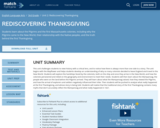
This unit challenges students to view history with a critical lens, and to notice how there is always more than one side to a story. The unit begins with the Mayflower and helps students develop an understanding of why so many colonists decided to leave England and travel to the New World. Students will explore the hardships faced by the colonists, both on the ship and once they arrive in the New World, and how the colonists persevered and relied on the geography and environment to meet their needs. Students will then learn about the Wampanoag, the people who were on the land before the Pilgrims arrived. They will learn about what the Wampanoag valued, how they viewed the Pilgrims, and how the arrival of explorers and settlers negatively influenced their tribe. Then students will be pushed to analyze what really happened at the first Thanksgiving, and whose story is being told. Students will realize that the traditional story of the first Thanksgiving contains many myths that don't accurately reflect the Wampanoag and what really happened in 1621.

For a quarter century, the federal government provided funding for cities large and small to raze "blighted" or "slum" neighborhoods. Though improved housing opportunities was the ostensible goal, over time, cities used federal funds to stimulate commercial and industrial redevelopment. Through these programs, cities displaced hundreds of thousands of families from their homes and neighborhoods. Renewing Inequality visualizes those displacements and urban renewal more generally.
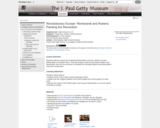
Students will learn about the Protestant Reformation and the Catholic Counter Reformation as related events. They will analyze works by the artists Rubens and Rembrandt, and use the artworks to illustrate the divergent beliefs and philosophies of the two movements.
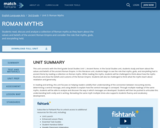
This unit connects with the third grade Social Studies Unit 1, Ancient Rome. In the Social Studies unit, students study and learn about the values and beliefs of the ancient Roman Empire. In this literature unit, students begin to see the role that myths, gods, and storytelling had in ancient Rome by reading a collection on Roman myths. While reading the myths, students will be challenged to think about how the myths illustrate and show the beliefs and customs of the Roman Empire. Students will also be challenged to think what the myths teach about retaliation and generosity.
In reading and writing, this unit focuses on helping readers solidify their understanding of the connection between recounting stories, determining a central message, and using details to explain how the central message is conveyed. Through multiple readings of the same myths, students will be able to analyze and discover the way in which messages are developed. Students will then be pushed to articulate this understanding both orally and in writing. Rereading the same myth multiple times also supports students fluency and vocabulary development.

Why look at art? Art is one way humans communicate ideas to one another. Sifting through the information art presents takes careful and purposeful looking. Virginia Museum of Fine Arts has a resource that can foster close-looking and thoughtful analysis of artworks from any period or culture. Use this resource (see link) to practice looking at art before a visit to the art museum or to document thinking about art as a primary source of insight into a culture or time period. Included in this resource are: a) Works of art from the Virginia Museum of Fine Arts and a link to find more.b) Simple framework and prompts to help students document their analysis and thinking. c) Discussion prompts.
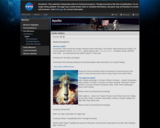
Hear sound recordings from the Apollo 11 mission to the moon.

Three 45 minute lesson plans integrating history/social studies and computer science. To better understand connections across time and place as well as the positive and negative impact of technology/inventions on society, students examine these issues in the present since they experience computer technologies in their daily lives. Later, students explore the Industrial Revolution period and how past technology/inventions impacted daily life in the 19th Century. The lesson will culminate with exploring and making connections between the impact of various technologies on people in the present and the past.

This teaching guide and activity seeks to introduce primary sources to students so that theyT can understand how to analyze and interpret them to make conclusions about the past. The primary sources the students will analyze are from the John Marshall House’s collection. All of the sources presented, both objects and written, focus on the theme of clothing during the Early Republic (1780-1820), the period in which John Marshall lived. This teaching guide and activity follow the Virginia Standards of Learning from 4th-6th grade, but may be applicable for other grades/ages.
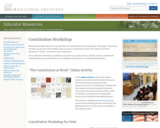
This is a self-service online workshop for teachers who use primary documents to help students see the impact and ongoing relevance of the Constitution. It requires little advance preparation and provides everything needed, including a vocabulary list, document analysis worksheets, and historical documents -- John Marshall's Supreme Court nomination (1801), proclamation to New Orleans (1803), Lincoln's telegram to Grant (1864), Johnson oath photo (1963), and more.
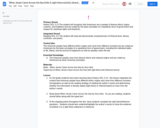
As 3rd grade students have been learning about History SOL 3.13 - this lesson integrates the content that American people have different ethnic origins and come from different countries (immigration) as well as the reading strategy of reading the author’s words and determining whether the information is directly stated (right there) or inferred based on clues from the author’s words.

The performance-based assessment is intended to fulfill the requirements for local alternative assessments for VAAP History Grade 3. Students complete the reporting category for geography.HS-G 1c The student will develop map skills by indentifying the shapes of the United States and Virginia on maps and globes.
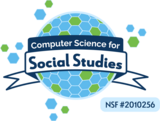
In this lesson, students will organize and visualize data from indentured contract databases from virtualjamestown.org in order to come to some conclusions about the characteristics of indentured servants in early colonial America. They will make specific decisions about how to organize the data and how to best visualize the data. They will then use the data to draw conclusions about indentured servants in early colonial Virginia, culminating in a creative journal entry assignment. Additional lessons can have students search for and analyze data on the enslaved Africans of early colonial Virginia in order to compare and contrast the two forms of labor in colonial Virginia.
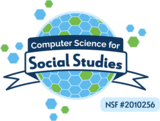
Students will sort and analyze data about a historical figure from the American Revolution then create a desk depicting the accomplishments, life events and/or experiences, positive and negative of the historical figure of that individual. Students will work in heterogeneous groups on a project where they sort data and analyze data about a historical figure during the American Revolution. Students will use the data collected to create a depiction of the historical figure’s desk.

Primary source analysis activity from Preservation Virginia's historic John Marshall House, which was the 1790 urban home of the fourth Chief Justice of the United States Supreme Court, his family, and 8-16 enslaved domestic servants until 1835. This activity presents three primary sources relevant to the John Marshall House that detail the variety of lived experiences of women in Early America.